Picking headphones for guitar amps isn’t easy. Most standard headphones don’t work well with distortion and other guitar effects. And studio headphones can be quite expensive and difficult to choose from.
In this KGR Review, we’ve tested and listed the 7 Best Headphones for Guitar Amps you can buy today. We’ve chosen from various models based on their unique features, sound quality, comfort, and how they felt while practicing and recording guitar.
We used the same Fender Stratocaster and a Boss Katana amplifier to test all the headphones that didn’t already have amps built into them. We also explored their versatility in various scenarios, including direct-to-amp, via an audio interface into a PC and also through a HeadRush Pedalboard. These models will easily allow you to practice silently and record accurately.
Read more about our review process.
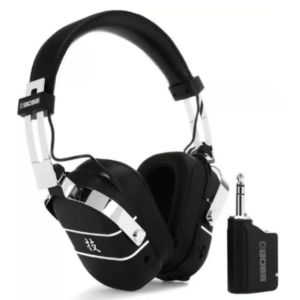
Boss Waza-Air
Features: Built in amplifier, Surround/Static/Stage virtual environments, 5 Amp models
Benefits: Low latency performance, Studio quality sound, Easy storage and transport
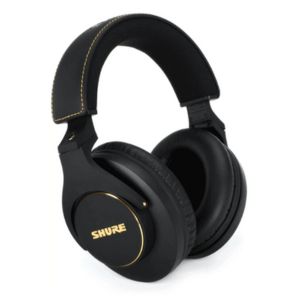
Shure SRH840A Professional Monitoring Headphones
Features: Well padded headband, Closed back design, Gold plated adapter
Benefits: No tonal coloration, Extremely comfortable, Great frequency balance
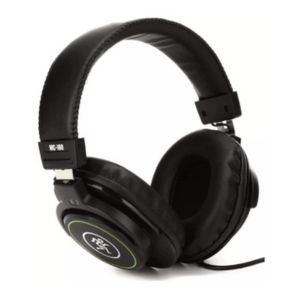
Mackie MC-100 Professional Closed-Back Headphones
Features: Large drivers, Ergonomic ear pads, Closed back design
Benefits: Great sound quality, Durable construction, Comfortable during long practice sessions
Contents
Our Top 3
The Shure SRH840A are versatile studio headphones that work well with guitar and are comfortable to wear for extended practice sessions, making them our Top Pick. They deliver excellent sound with a relatively flat response and have a durable build.
The Mackie MC-100 is the Best Budget option and offers surprisingly good performance with a tinge of character at an affordable price. While their build is somewhat unreliable, they’re great for beginners and work well with most amps.
The Boss Waza Air is our Editor’s Choice. It’s purpose-built for use with guitars and features the very best in wireless amp simulation technology — perfect for portable, silent practice. The onboard Katana tones sound fantastic and while it’s a bit bulky, it’s still comfortable to wear.
Individual Reviews

Shure SRH840A
An exceptional balance of sound quality and comfort for guitar monitoring.
We were impressed with the Shure SRH840A straight out of the box. Shure has a reputation for quality, and these headphones reflect that well. The unboxing was smooth, as the pair was packed safely in a bag, and it included a quarter-inch screw-on adaptor for the aux cable.
The SRH840A comes with a sleek finish and a sturdy yet elegant design. We put them on for testing and found the closed-back, around-ear design comfortable for long hours of guitar practice and casual listening. The earpads are breathable and soft, too.
The noise isolation works well as the speaker units have no noticeable bleed and no one around us could hear what we were listening to. The headband and overall construction are solid and easily adjustable.
The 40mm neodymium dynamic drivers provide exceptional detail across all frequency ranges. We could clearly enjoy every nuance of our guitar playing, including the sweet bends and the growl of crunchy power chords. We don’t usually like how headphones can make the guitar sound ‘boxy’, but these had slightly more air to them with a medium-wide soundstage and remarkable midrange clarity.
They cover a 5 Hz to 25 kHz range and the overall response is quite neutral, so they’re great for creating new tones for studio recordings. And we found they work quite well for mixing and music production as well.
The quarter-inch adapter isn’t the only benefit of the cable that comes with the 840A. The other end can be screwed into the headphones so you won’t accidentally yank it out while playing.
Verdict: The Shure SRH840A are an excellent pair of studio headphones with detailed character and a relatively flat response, making them great for guitar practice, studio work, and even mixing. They look elegant, offer superior comfort, and come at a reasonable price from a brand that’s known for reliability and durability.

Mackie MC-100
Affordable headphones with good midrange.
The Mackie MC-100 surpassed our expectations considering its affordable price. Out of the box, the packaging was simple, with a straightforward around-ear design and average build quality. There’s a 3 m cable that comes included along with a quarter-inch adapter.
We found the materials used and the finishing on the MC-100 are quite comfortable once you wear them. The adjustable headband has a decent amount of padding, but it clamped a bit hard initially. After stretching them out, they were easy to wear. The design is quite flexible and the pads are rotatable, so you can wear them on one ear like a DJ.
The noise isolation is decent but not perfect. When we tested them, we could still hear some outside sounds, but it was good enough for guitar practice. In our opinion, the long cable is incredibly convenient since guitarists need space and flexibility, but it’s not coiled and is a bit prone to getting tangled.
The thing that stood out most for us were the custom 40mm drivers. They have a good bass response and a detailed midrange, but lack upper-range clarity. With a frequency response of 15 Hz to 20 kHz, these cans covered everything necessary, but lacked some of the harmonics we’ve seen in better pairs. This made a few songs sound slightly darker.
We found that durability is likely a concern with these. The plastic isn’t that sturdy and the earpads are quite prone to tearing up. But you can easily take the earpads out and replace them if they get too worn out.
Verdict: The Mackie MC-100 are the Best Budget studio headphones we’ve tested, with just enough comfort. Their sound isn’t that flat, but it has enough detail and clarity to enjoy practicing guitar on them. And with their affordable price, they’re a good pair of spare headphones to go. They work particularly well with headphone amps.
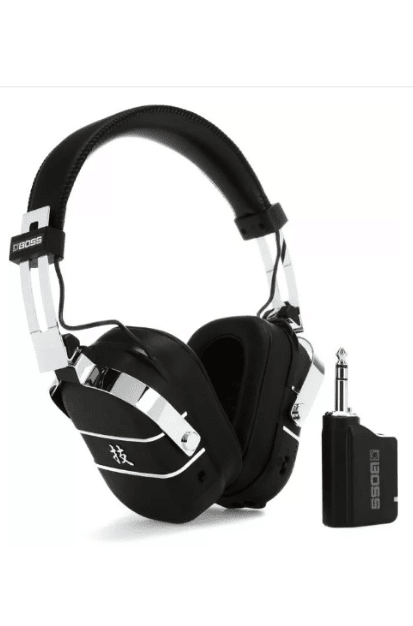
Boss Waza Air
Incredible guitar tones with wireless convenience.
The Boss Waza-Air has been popular among guitarists ever since it came out. On paper, it looks like the perfect wireless solution to playing the guitar silently, and it did not disappoint at all. The headphones come with a wireless transmitter which is enough to use 6 amp presets (modeled after the Boss Katana), but you can get the mobile app to get full functionality.
The Waza-Air has a beautiful chrome finish, although they’re a bit bulky. We found that the ear cups were incredibly plush and easily detachable for cleaning, and the closed-back design offered excellent isolation. Pairing them with our phone and the transmitter was quick and easy. We did face one sudden disconnection while playing, but it was easy to reconnect.
What we loved about these headphones was their surround-sound experience. The gyro-sensors make it possible to simulate a real room, and moving your head pans the sound as it would for an actual amp. This made for an authentic guitar session — one of the most fun ones we’ve ever had while using headphones.
The 50mm drivers of the Waza-Air deliver a punchy sound that’s fit for guitar. They’re not designed to be flat, but they work perfectly with the Katana-modeled amp tones. We were able to adjust the tones easily using the app, making this a completely wireless experience. We tested this further by walking around the room while playing and there were no issues at all.
The Waza-Air also gives you the option to stream backing tracks while playing. We also enjoyed listening to music on them via Bluetooth. The stated battery life for the headphones is 5 hours, and 9 hours for the WL-T wireless transmitter. In our tests, we got about the same period on regular usage. Overall, everything about their design is convenient and intuitive.
Verdict: The Boss Waza Air is a well-designed pair of wireless headphones with some of the most innovative technology we’ve seen. It’s got excellent amp tones from the Katana series (such as our favorite, the 50w MKII), and incredible room simulation with surround sound. The build is ruggedly durable, and they’re comfortable to wear for long jam sessions. While they’re expensive, they’re well worth it if you need a portable solution for silent guitar practice.
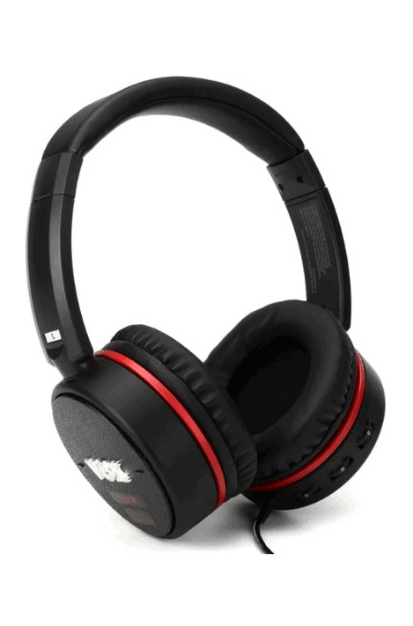
Vox VGH Rock
An affordable mini amp packed into headphones.
The Vox VGH Rock is an affordable headphone amp solution purposefully created for guitarists in collaboration with Audio-Technica. It’s based on their amPlug technology, which we loved while reviewing the best guitar headphone amps.
The Vox VGH’s design is quite sturdy and portable, and we were able to fit it into a backpack easily. The lengthy cable has a quarter-inch jack so it can connect directly to your guitar as a mini-amp. There’s also an aux input, so we were able to connect our mobile and play along to a backing track.
We felt the ear cups were a bit small, and the cushioning was a tad thin, so it may not be comfortable for long hours of practice. But they were fine when we wore them for half an hour and the noise isolation was quite good with no noticeable bleed around us. The sound, however, is a bit focused and not as detailed and spacious as other headphones we’ve tried.
What we loved about the VGH Rock was its ability to deliver classic crunch tones. There are 3 different amp modes available along with onboard effects like reverb, delay, and chorus. All the effects are controlled using knobs on the headphones themselves.
Since it’s battery-powered, you don’t need any electric outlets. It’s as simple as plugging your headphones into the guitar anywhere. We liked this plug-and-play approach, making it convenient for quick jam sessions anywhere. With three AAA batteries, you can get up to 16 hours of battery life, and they lasted about 14-15 for us.
Verdict: The Vox VGH Rock is a fantastic headphone with a guitar amp built into it. The 3 onboard amp tones sound authentic with great crunch, while playing backing tracks through it allows for a fulfilling personal jam session. While its comfort is only decent, the affordable price makes them well worth trying out.
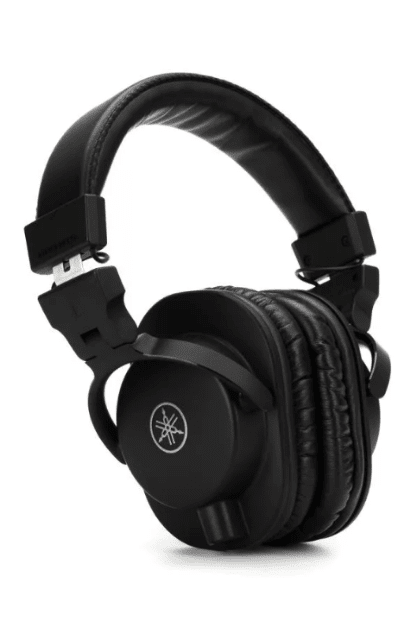
Yamaha HPH MT-5
A great all-rounder for studio and guitar work.
The Yamaha HPH-MT5 was designed for studio work, but with their accuracy and flat frequency response, we tested them for guitar practice too. And they worked really well.
These closed-back monitors had a detailed output, with a great midrange that fits well with guitar tones — we could hear the tiny nuances of our tone. The noise isolation and comfort are excellent and much better than others we’ve tested at this price point. Plus, the CCAW 40mm neodymium drivers cover the entire audible range from 20Hz to 20 kHz.
We found the design and build quality was good, as we expected from Yamaha. The plastic doesn’t flex too much, the headband is sturdy, and the earpads are thick and durable enough to not tear too easily. It’s tough enough to survive hours of practice and sweat without falling apart.
The 10-foot cable that comes with it can be fastened onto the headphones along with an included quarter-inch adapter on the other end. So we were able to use these cans with our mobiles and laptops as well as direct into an amp or interface. The foldable design makes them really portable and easy to fit into any bag.
Overall, if you already have a headphone amp or if you’re plugging into an existing amp/interface setup, these will work well for you. They’re exceptionally good for recording tracks while being able to listen to your playing clearly, and they’ll also work well if you plan to mix and master with them.
Verdict: The Yamaha HPH-MT5 delivers accurate, crisp sound that captures the nuance of your playing. The flat frequency response is great for creating new tones and the midrange character suits guitars even though they’re not built for it. They’re comfortable with plush ear cups, and the build quality is sturdy. A good choice for a variety of session work.
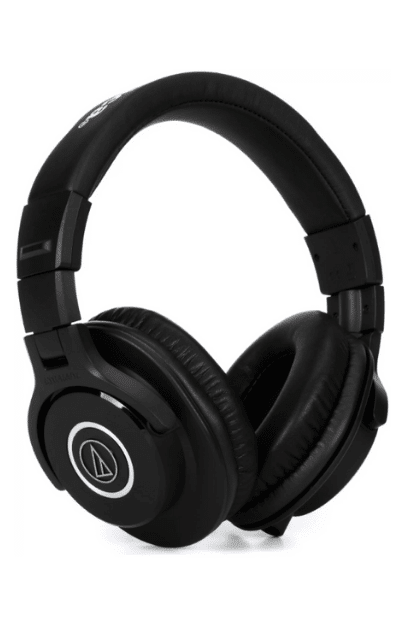
Audio-Technica ATH-M40x
Comfort and precision in an excellent design.
The Audio-Technica ATH-M40x, along with the M50x model, are some of the most popular studio headphones around. After testing both models, we found the M40x works the best for guitar, delivering higher accuracy than most other headphones we’ve tried.
The frequency response is fairly flat, so it can take some getting used to for guitarists who’ve never used monitors before. But we did find the M40x to be incredibly useful in analyzing the finer aspects of our tone. You can hear the bass, mids, and treble clearly with no bias, and adjust the amp settings accordingly. The open midrange also brings out the flavor while soloing.
We liked the flexibility and sturdiness of the headband and the speaker housing. They’re comfortable on the head, and can swivel and rotate as needed too. The earpads are durable, thick, and well-padded, so they’re suitable for larger heads as well. But the initial clamping force was a bit strong and we needed to stretch them out. There’s good noise isolation too – we couldn’t hear any external noises while playing at medium volumes.
The headphones come with two cables: a straight one and a coiled one, both 3 meters in length, along with a quarter-inch adapter. The cables can be screwed in and locked, which prevents them from being yanked out suddenly while playing. The headphones collapse and fold into a portable format, easily fitting into the provided carry bag.
Verdict: The Audio-Technica ATH-M40x are popular among musicians of all genres for good reason. They deliver excellent performance at a reasonable price. Their sound quality is clear, articulate, and very flat. The build quality is durable, and the earcups are comfortable. While they’re not purpose-built for guitar amps, they’re versatile and work well in just about any scenario.
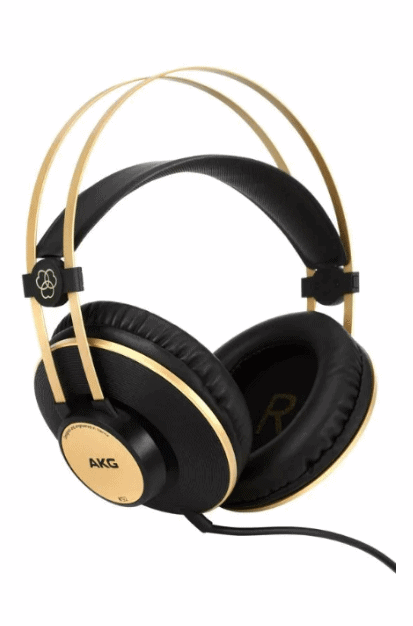
AKG K92
Well-designed with decent sound for guitars.
The AKG K92 are another pair of budget headphones, with a similar price to the Mackie MC-100. They have a slightly different design, but one that looks very appealing with the gold finish.
Out of the box, the K92 includes only a straight 3m cable with a quarter-inch connector. The self-adjusting headband consists of two bare strips of metal with a soft pad that moves as you wear it, allowing for a comfortable fit for anyone. The overall build is mostly plastic, but we found it’s sturdy and doesn’t flex too much while still being very lightweight.
The earpads are soft and can be replaced, but the stock ones were a bit thin in our tests. We could feel the drivers just barely touching our ears. We did try another set of earpads on them, but that changed the sound signature significantly, so we stuck to the original ones for this review.
For the price, we felt these have great sound – detailed and quite clear, although a little less headroom and width than others we’ve tested. While it’s not very flat, the frequency response has a decent midrange and good bass.
If you’re planning on practicing and tracking with these, they’ll work well. The noise isolation is reasonable, although the thin earcups lead to some bleed. Since they have a low impedance design, we found they work well with laptops and mobiles too.
Verdict: The AKG K92 have a thoughtful design that’s quite comfortable, especially if you replace the earpads. They have a typical AKG sound, which isn’t very flat, but still detailed and clear for recording guitars. The build is relatively sturdy, and its gold finish lends it an aesthetic appeal. If you’re on a strict budget, this is certainly an option to consider.
How to Choose the Right Headphones for You
It’s tough to pick out headphones if you’re not able to try them on — everyone has a different set of preferences for sound, comfort, and any other features. There are a variety of models at different prices, so here are some things you should look for:
Sound Quality and Frequency Response
Guitarists need headphones that work well with the distortion and effects in a guitar amp. Most normal headphones fail at this, so studio models work best. You’ll need a balanced frequency response with a clear midrange so that your guitar sound stands out in a mix. A flat sound helps you create better, more accurate tones as you can hear it faithfully.
But how flat you want the sound to be and whether you prefer a certain character, depends completely on your ears. If you’re also planning to mix and produce songs with these same headphones, then a flat signature will be better. But if you’re only practicing and monitoring, headphones with a slight ‘V’ character (but not too much) can be easier to listen to, without being too sharp.
Driver size has an effect on the overall loudness of the headphones, but doesn’t directly affect sound quality. The construction and material for the drivers are a better indicator of that.
Lastly, some of the headphones on our list have in-built amps in them, like the Boss Waza-Air and the Vox VGH. If you’re going for such a model, you’ll want to test whether the onboard tones suit your preferences. If not, you may be better off combining a separate amp with another set of cans.
Design and Acoustics
Another essential consideration is design. This contributes to the headphone’s aesthetics, as well as their durability and ruggedness. Some of them can fold and easily fit into a backpack, while others may be a bit less sturdy and require more careful use. You can also consider whether you want the convenience of wireless, or to go for a wired pair.
As for acoustics, you’ll likely need good noise isolation with a closed-back design for recording guitar more accurately. For silent practice, you’ll also want headphones with less bleed so that no one around you would be disturbed.
Fit and Comfort
Even the best sound quality will not save a pair that is not comfortable to wear for long hours. In our experience, circumaural headphones (around-the-ear) with good padding are the best for guitarists as they’re comfortable and offer good noise isolation.
The width of the earpads also needs to be good enough to be comfortable, yet they shouldn’t be so wide that your ears don’t fit properly, leading to poorer sound. So comfort is subjective, even more than the sonic character of the headphones, and may need some experimentation to find the right fit. Sometimes you can replace the pads, but this can change its frequency response.
Your Existing Setup
Whenever buying new gear, it’s always practical to consider how it’ll fit into your existing gear setup. What do you use most? A guitar amp? An audio interface? A portable headphone amp?
And where will the headphones be connected? Different devices may even require different connectors. And impedance is an important consideration here. Most of the headphones on our list only have a medium impedance in the 30-50 Ohm range, but note that high impedance models may not work properly with all devices.
There are many different ways to use headphones, so you should pick the one most comfortable for you. When possible, try out a similar set from a shop or a friend and see how it works for you.
Final Thoughts
In summary, the best headphones for guitar amps are…
The Boss Waza Air is our Editor’s Choice. The Shure SRH840A is our Top Pick and offers the best sound quality without breaking the bank, while the Mackie MC-100 are a great Budget Choice that works well for guitar.
Headphones, like most audio gear, are very subjective and tough to decide without being able to test them yourself. But by comparing the quality-of-life features like onboard amp tones, the frequency response, and the overall design, you can choose one that’ll help you practice and record guitar much better.


